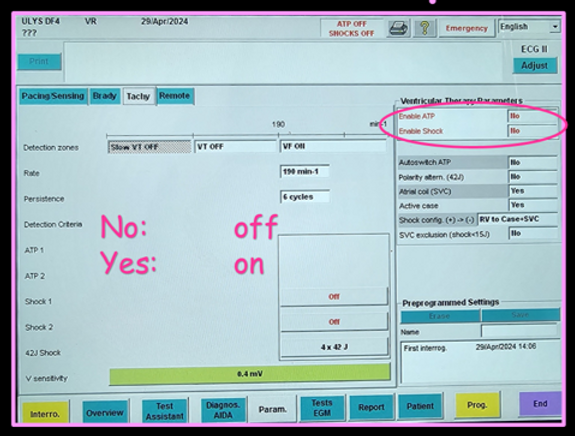top of page
Temporary ICD deactivation / palliative programming / deceased programming

Palliative programming
Device deactivation needs to be a shared decision amongst patient/power of attorney and treating healthcare team, and must be carefully considered of a persons individuals circumstance at the time
ICD functions
•May be switched off
Pacemaker function
•Alteration of pacemaker function should not be made, especially in a dependent patient (euthanasia)
•Pacemaker does not cause pain, may make the person more comfortable.
•Turning a pacemaker may lead to various situations
-Could make a person feel considerably worse due to reduced cardiac output
-may lead to immediate death
-could also result in a distressing episode of syncope, during which patient may suffer harm, and after which they may be left with continuing burdens such as a new disability or distressing symptoms
Euthanasia / Voluntary assisted dying (VAD)
•Legal in Australia (all states)
•Long complex assessment by multiple medical practitioners
•VAD is usually assisted by specialised
Health practitioners or in some states
Nurse practitioners (not allied health)
Deceased programming
Pacemaker function
•No changes required
ICD functions
•No changes required
** If a person with a CIED suffers an unexpected/sudden death, device interrogation should be considered to obtain information about cardiac rhythm and device behaviour to help establish mechanism/cause of death
Temporary ICD deactivation
Temporarily disabling therapies on an ICD may be necessary under certain situations
•This may be for MRI, surgery or other cardiac procedures
It is important to disable therapies in an efficient way that allows for appropriate restoration of settings when therapies are to be reprogrammed back on
Ensuring a safe method of making temporary adjustments on a CIED minimses risk of unintentionally changing original programming settings.
Abbott

Biotronik

Boston Scientific

Medtronic


Microport

bottom of page




